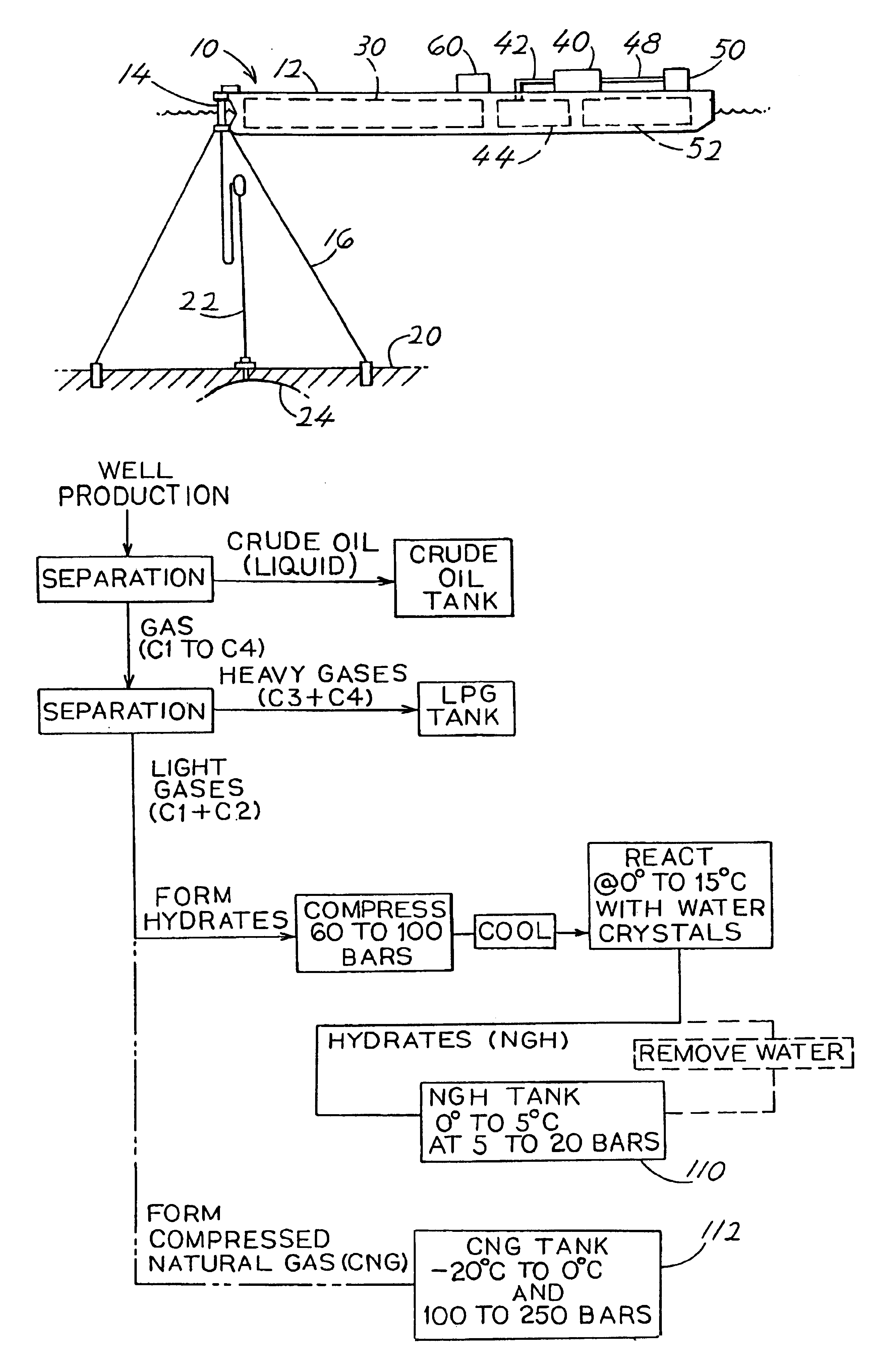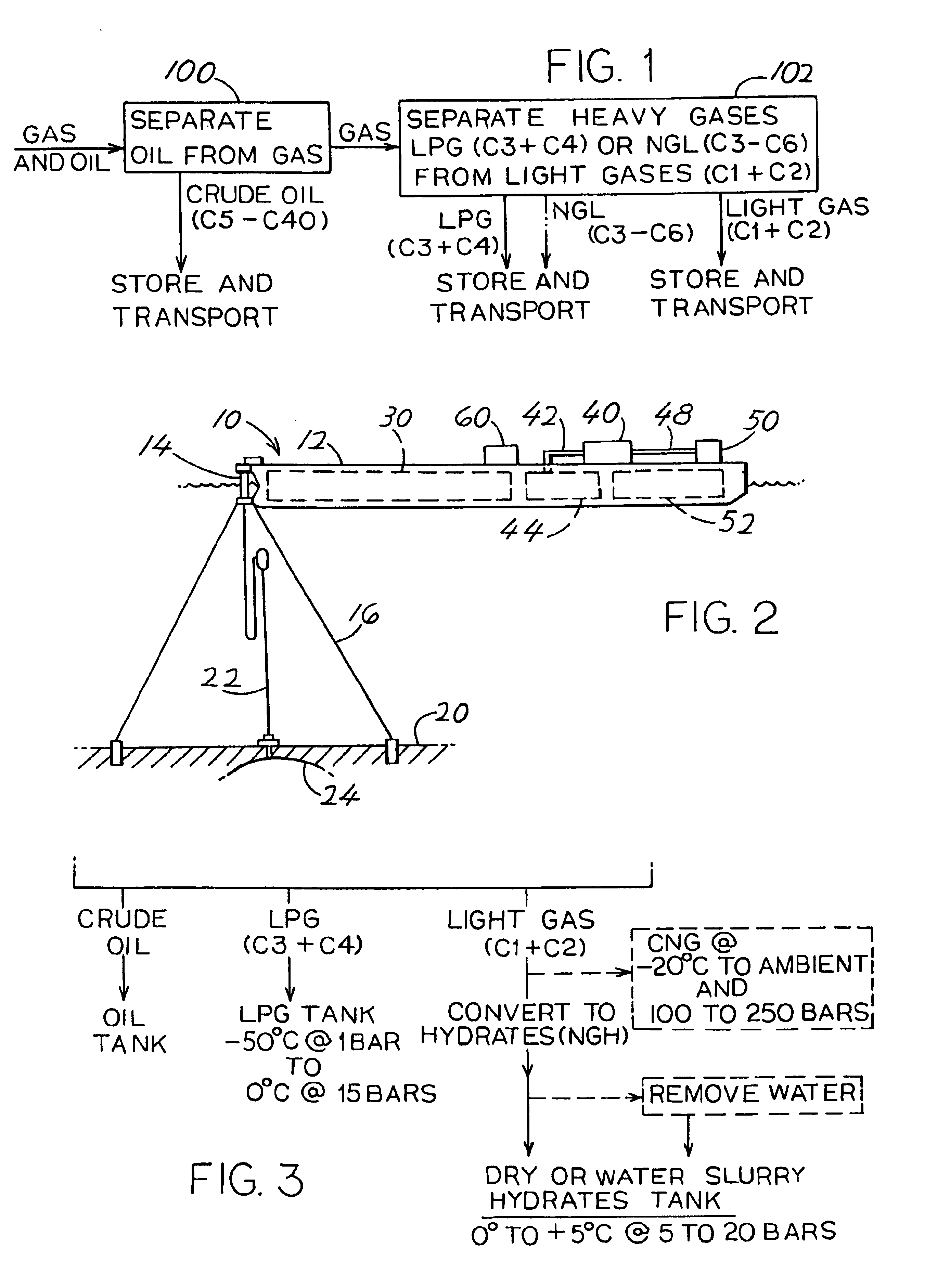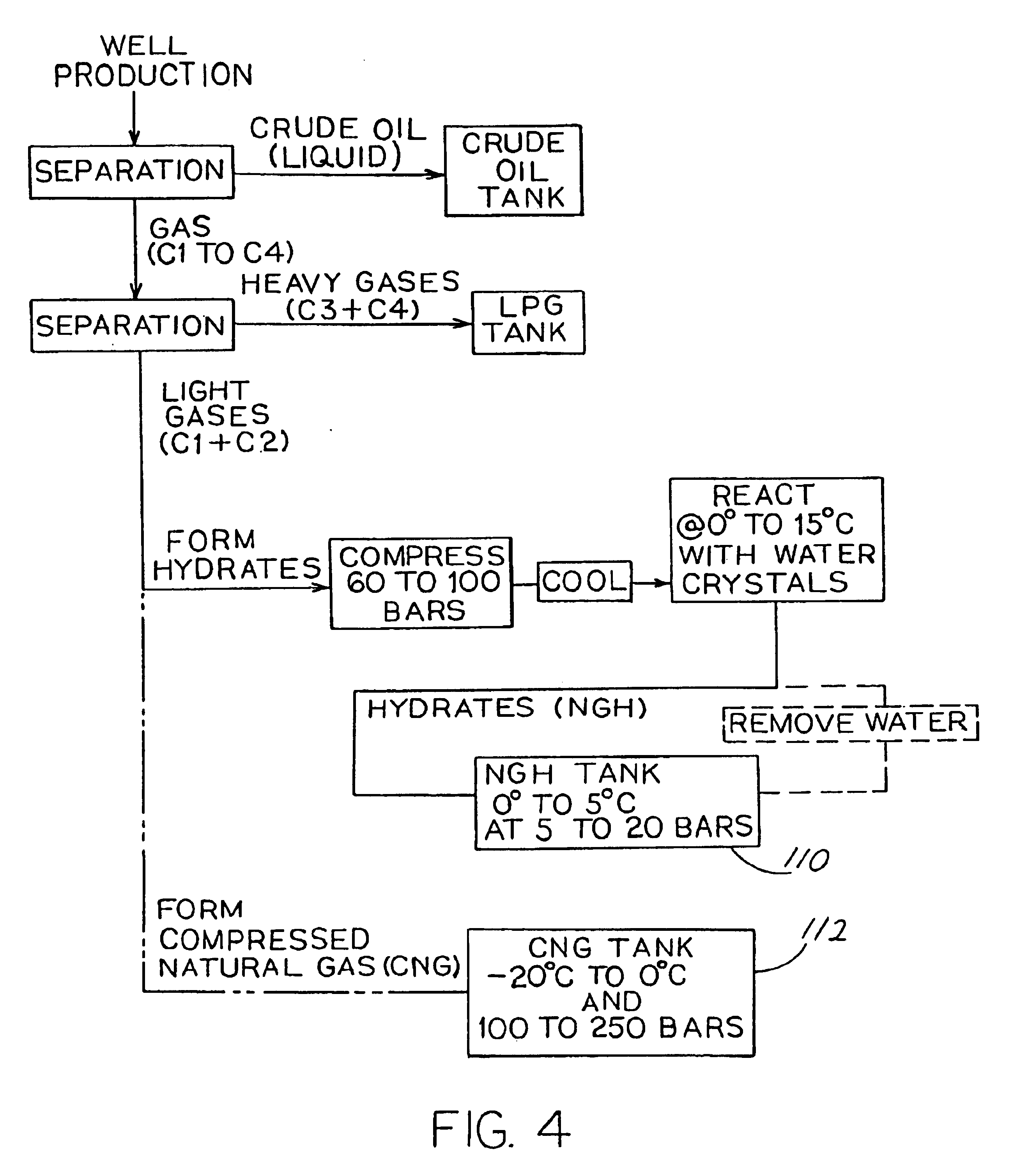Marginal gas transport in offshore production
- Summary
- Abstract
- Description
- Claims
- Application Information
AI Technical Summary
Benefits of technology
Problems solved by technology
Method used
Image
Examples
Embodiment Construction
[0011]FIG. 2 illustrates an offshore hydrocarbon production system 10, which includes a floating body in the form of a production vessel 12 anchored through a turret 14 and mooring lines 16 to the seafloor 20. Other types of suitable floating bodies include tension leg platforms and spars. A conduit 22 extends from a seafloor hydrocarbon reservoir 24 and through the turret 14 to the vessel 12. The hydrocarbons produced from the reservoir generally include liquid hydrocarbons (crude oil) and gaseous hydrocarbons. The liquid hydrocarbons are easily separated from the gaseous hydrocarbons, and the liquid hydrocarbons are stored in an oil storage tank 30, as for later offloading onto a tanker perhaps every month. A major problem is how to deal with the gaseous hydrocarbons.
[0012]It is assumed that the seafloor reservoir 24 lies far from facilities that can further transport or use the gas such as a gas pipeline or a power plant and it is uneconomical to build a pipeline, so the gas is c...
PUM
 Login to View More
Login to View More Abstract
Description
Claims
Application Information
 Login to View More
Login to View More - R&D Engineer
- R&D Manager
- IP Professional
- Industry Leading Data Capabilities
- Powerful AI technology
- Patent DNA Extraction
Browse by: Latest US Patents, China's latest patents, Technical Efficacy Thesaurus, Application Domain, Technology Topic, Popular Technical Reports.
© 2024 PatSnap. All rights reserved.Legal|Privacy policy|Modern Slavery Act Transparency Statement|Sitemap|About US| Contact US: help@patsnap.com










